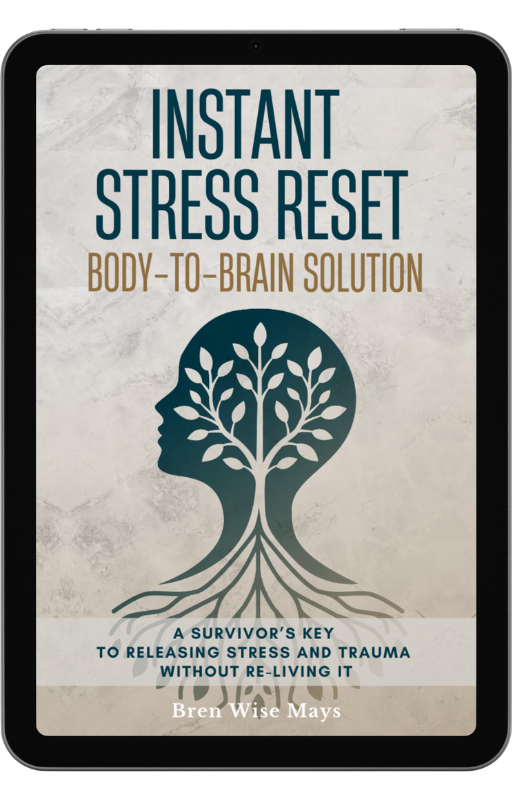Healing After Divorce: Creating Emotional Closure
(Even When You Never Got an Apology)
Divorce is brutal. Especially when it follows betrayal, abuse, or long-term deception.
When you’ve been gaslit, lied to, used, and discarded — you don’t just walk away nursing a broken heart. You're left carrying all the fragments of your identity, dignity, and probably your trust in humanity. Even if you're relieved now, safer now, and thankful to be free.
It still hurts like hell.
Here’s a hard truth no one hands you in church classes about relationships, and sometimes counselors don't mention it either:
Closure is not something your ex gives you.
Closure is something you create for yourself.
But how do you do that when the person who harmed you won’t take ownership...
...or keeps rewriting the narrative,
...or just ghosted you without ever being honest?
Let me give you some helpful steps that I walk through with my clarity coaching clients:
Step 1: Write a Closure Script
You don’t need their validation. You need to clearly see and acknowledge what you know to be true.
Create a script — not to send to them!!! — but for your own nervous system. A declaration of truthful clarity. A step toward reframing what happened, taking responsibility for only what is yours, and moving forward into wholeness without shame.
Here’s a simple version crafted with one of my clients:
“He was living a secret life. His actions proved that didn’t want to keep his vows. So I released him from them — to freely live the life he wanted.
I choose integrity, not illusion.
I choose peace, not pretense.”
Your version might sound different. But it needs to be short, strong, and grounded in reality.
No minimizing.
No self-blame.
Just truth.
Step 2: Tie Up the Loose Ends That Remain
Ask yourself this:
What’s still left hanging?
What feels incomplete?
Is anything still tangled in my mind or emotions?
Make a list. Get specific. These micro-steps are courageous acts of closure.
Here are some examples:
Emotional & Mental Disentanglement
Write letters you’ll never send — and then burn them as a release ritual.
Speak reminders to yourself out loud when you start to spiral: “I’m allowed to move on. I’m allowed to be free.”
Create a “mental redirect” for when intrusive thoughts pop up.
Practical Closure Actions
Delete old texts, emails, and photos that retraumatize you. (Unless they're needed as evidence. Don't delete evidence!)
Organize your legal and financial documents into a “divorce binder.” (I have a template for this here, so you don't have to reinvent the wheel!)
Clear shared belongings out of your home — one drawer at a time.
Block or mute their number/socials to protect your peace. (Obvs this only works if you aren't co-parenting, but if you are, you can still shift all communication to a court-safe platform like Our Family Wizard!)
Relational Boundaries
Script a short, firm response for mutual acquaintances who pry. (And stick to it. Everyone gets the same factual response.)
Decide what topics are off-limits when co-parenting. (Pro tip: that's everything. Only discuss what is necessary for the kids.)
Set boundaries with friends/family who keep saying “you should’ve…”
Why These Steps Matter
Closure isn’t about getting revenge or engaging in dramatic confrontations.
It’s about giving yourself the gift of emotional clarity when no one else is going to.
It’s about cutting the cords of confusion so you’re not dragged back into the emotional and psychological and relational chaos.
It’s about reclaiming your power by using language that clearly reflects the truth, not just the trauma.
You get to name what happened.
You get to decide whether and when to tell your story.
You get to walk forward with dignity.
Closure Is an Act of Resistance
In systems that glorify staying no matter the harm —
In churches that shame spouses for fleeing abuse —
In families that prioritize public image over internal integrity —
Creating your own closure is an act of sacred rebellion.
It says:
“Abuse doesn’t get to define me.
My abuser's self-exempting narrative isn’t the only one.
I’m not waiting for someone else to feel remorse before I heal.”
You Deserve Peace
Not performative forgiveness.
Not toxic positivity.
Not another layer of glossy public image management.
Real. Quiet. Peace.
The kind that lets you exhale.
The kind that lets you dream again.
Start by writing your closure script today.
Then make your list.
Then choose one small action.
You don’t have to do it all today.
But you can begin.
And every step forward is a step navigating your journey out of the fog and into the freedom you were meant to have.
Tell Me:
Have you ever written a closure script? What steps were on your “acts of closure” list?
Comment below or message me — I’d love to hear.
Instant Stress Reset: the Body-to-Brain Solution
A 5-Day Guided Experience to
Calm Your Nervous System—Without Needing to Talk It Out
Accessible. Effective. Shame-Free.
